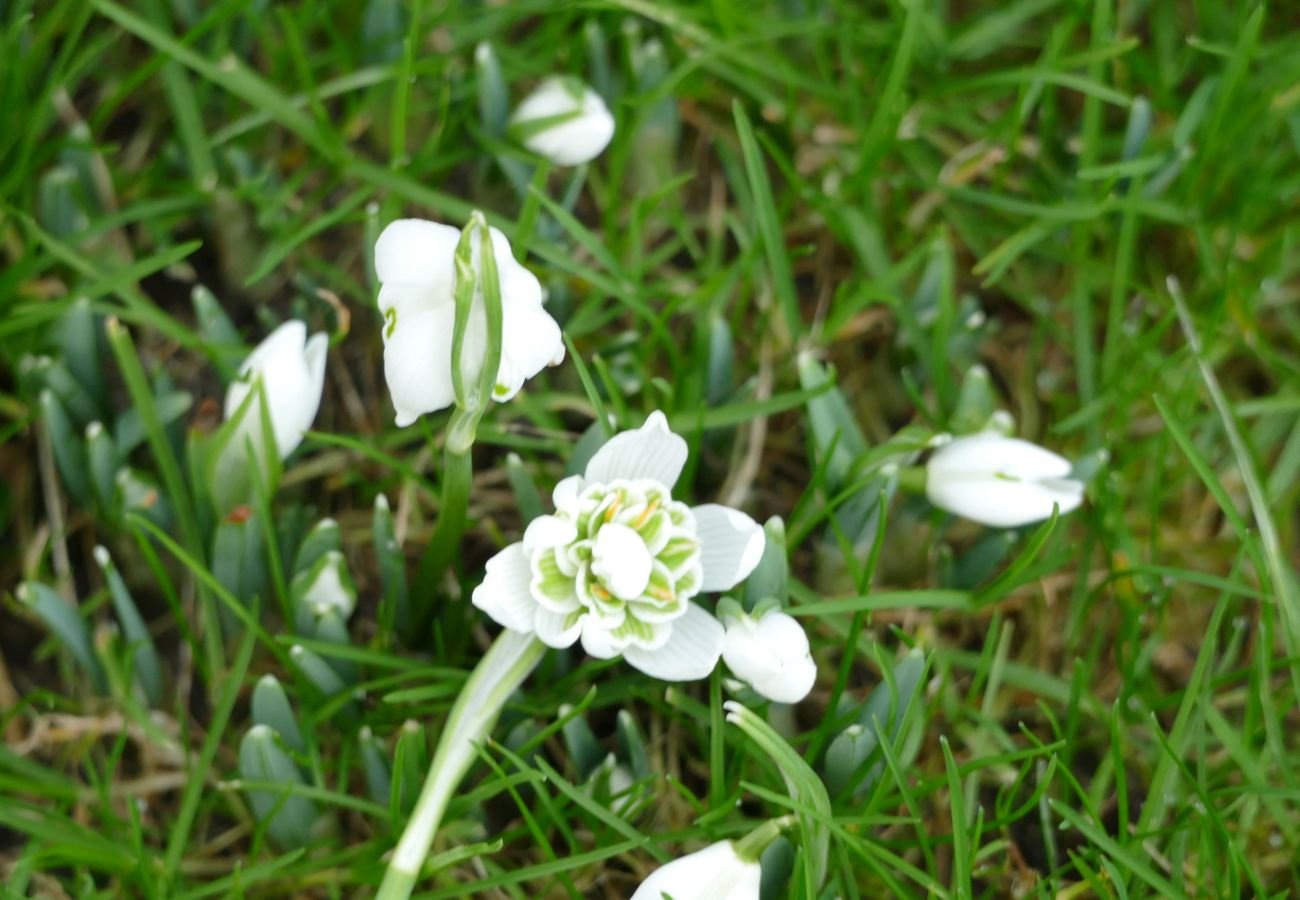Perce-Neige
Snowdrops: the first flowering bulb of spring. What’s not to like?
When the Head Gardener of Gatton Park in Surrey takes you on a tour of the garden’s snowdrops, in advance of their first ‘open day’ of the year, snowdrops deliver at their delicate best. Set in a Capability Brown landscape perched on the North Downs, and accompanied by stunning views and the scents of Daphne and Sarcocca (Sweet Box), it’s a pretty sensual experience.
But is this delicate, early spring flower (the snowdrop, not the Sarcocca which is anything but delicate), able to overcome the clichés and past associations which follow it around?
Snowdrops in poetry are definitely seen as symbols of hope, purity and solace. I do have problems with the Romantic poets, however. Try Wordsworth (1770 to 1850):
From To a Snowdrop
“Chaste Snowdrop, venturous harbinger of Spring,
And pensive monitor of fleeting years!”
This ‘chaste’ thing is quite something for a flower which, in a stiff breeze, is quite happy to flaunt its frilly underskirts. What is the first thing we do when up close and personal with a snowdrop? Turn a flower upside down to admire the delicate floral layers within.
Tennyson (1809 -1892) was also a fan of the snowdrop purity angle. Think of this famous two liner from
The Snowdrop
“Many, many welcomes,
February fair-maid!”
or this extract from
The Progress of Spring
“Wavers on her thin stem the snowdrop cold
That trembles not to kisses of the bee”
No way was Tennyson going to identify the snowdrop with a knight in shining armour or a king’s courtesan.
Christina Rossetti (1830-1894) (technically brilliant, but in my view very capable of schmaltzy platitudes) actually fares better:
Another Spring (first verse)
“If I might see another Spring
I’d not plant summer flowers and wait:
I’d have my crocuses at once,
My leafless pink mezereons,
My chill-veined snowdrops, choicer yet
My white or azure violet,
Leaf-nested primrose; anything
To blow at once, not late.”
Or
The First Spring Day (again Verse 1)
“I wonder if the sap is stirring yet,
If wintry birds are dreaming of a mate,
If frozen snowdrops feel as yet the sun
And crocus fires are kindling one by one”
At Gatton Park it’s the fiery aconites which this year out-compete the crocuses, and we’ve already commented on the sweet smelling Daphnes even if they are D. bholua rather D. mezerium/mezereons.
The Hellebores (below left and centre) and a witch hazel (below right) also contribute to the spring show.
Despite the best efforts of the Romantics, or possibly because of them, the Victorian snowdrop began to develop a darker personality. Some suggest that, as snowdrops became popular to plant in graveyards, the flowers became associated with bad luck and a harbinger of death rather than spring. (https://escapetobritain.com/snowdrop-history-galanthus-nivalis/)
The 20th century snowdrop, however, seems to have survived this bad press and became a very popular addition to gardens and parks as well as poetry. Enthusiastic amateur and professional horticulturalists have developed many new varieties with subtle differences in the size of flower and the pattern of green markings on and within the blooms. Gatton Park features Galanthus elwesii and G. ‘Flore Pleno’ as well as G nivalis.
Perhaps it is not surprising, therefore, that 20th century Snowdrop imagery seems to be much more robust, and references to purity have tended to shift to more sombre themes.
East Coker, No. 2 of T S Eliot’s Four Quartets (surely tautology - how likely is it that there would be three or five quartets?) is, inevitably, rather disturbing but, in my view, very exciting and, in this extract, very pithy about hollyhocks:
“What is the late November doing
With the disturbance of the spring
And creatures of the summer heat,
And snowdrops writhing under feet
And hollyhocks that aim too high”
(Please don’t tread on the flowers).
My favourite Snowdrop discovery, however, is Louise Gluck’s Snowdrops - perfect for a 21st century in pandemic.
“Do you know what I was, how I lived? You know
what despair is; then
winter should have meaning for you.
I did not expect to survive,
earth suppressing me.
I didn't expect
to waken again, to feel
in damp earth my body
able to respond again, remembering
after so long how to open again
in the cold light
of earliest spring”
Many gardens open to the public in February to display their collections. Terroir will be going back to Gatton Park on Sunday 6th February. This is not a woodland garden display, but rather a spread of snowdrops naturalising through the Edwardian flower and shrub beds, under massive veteran trees, or spilling down grassy slopes. The ’drops trim the Brown landscape with green and white lace, showing that once more, snowdrops are able to remember,
“how to open again in the cold light of earliest spring“.
See you there.
















